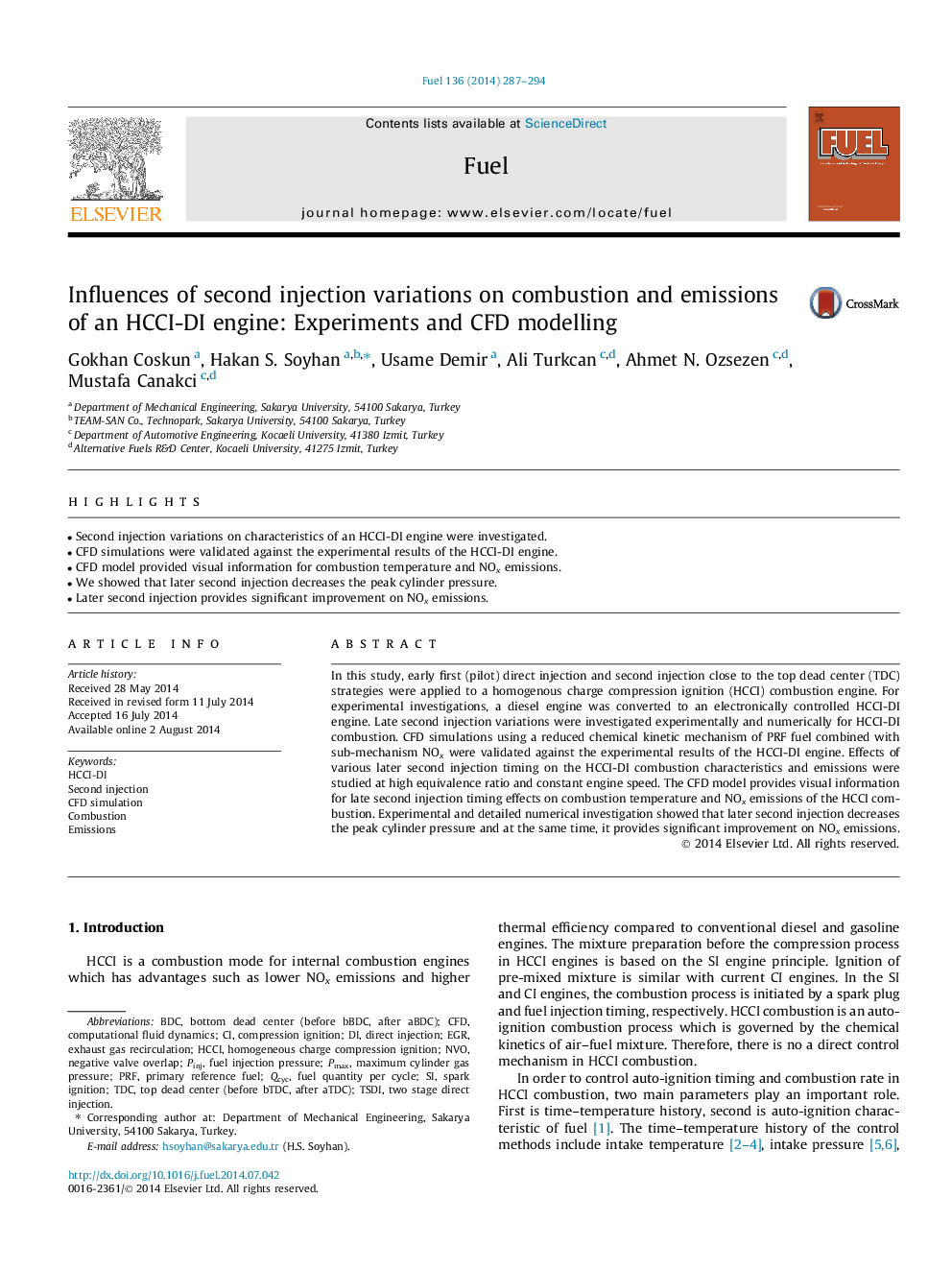| کد مقاله | کد نشریه | سال انتشار | مقاله انگلیسی | نسخه تمام متن |
|---|---|---|---|---|
| 206101 | 461138 | 2014 | 8 صفحه PDF | دانلود رایگان |

• Second injection variations on characteristics of an HCCI-DI engine were investigated.
• CFD simulations were validated against the experimental results of the HCCI-DI engine.
• CFD model provided visual information for combustion temperature and NOx emissions.
• We showed that later second injection decreases the peak cylinder pressure.
• Later second injection provides significant improvement on NOx emissions.
In this study, early first (pilot) direct injection and second injection close to the top dead center (TDC) strategies were applied to a homogenous charge compression ignition (HCCI) combustion engine. For experimental investigations, a diesel engine was converted to an electronically controlled HCCI-DI engine. Late second injection variations were investigated experimentally and numerically for HCCI-DI combustion. CFD simulations using a reduced chemical kinetic mechanism of PRF fuel combined with sub-mechanism NOx were validated against the experimental results of the HCCI-DI engine. Effects of various later second injection timing on the HCCI-DI combustion characteristics and emissions were studied at high equivalence ratio and constant engine speed. The CFD model provides visual information for late second injection timing effects on combustion temperature and NOx emissions of the HCCI combustion. Experimental and detailed numerical investigation showed that later second injection decreases the peak cylinder pressure and at the same time, it provides significant improvement on NOx emissions.
Journal: Fuel - Volume 136, 15 November 2014, Pages 287–294